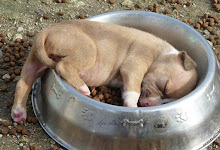Aside from giving your dog sufficient exercise and interestingthings to do in the yard, make sure your dog is on a high-quality premium hard kibble. Stay away from foods that are often loaded with hidden sugars, chemicals and preservatives (hidden sugars in the form of beet pulp, sucrose, fructose, etc., can exacerbate the dog’s energy levels and lead to digging), such as semi-moist dog foods.
If your dog considers the backyard (or wherever he digs) to be a place of banishment, it is more likely digging will occur there. I am suggesting that your dog should think of the backyard as more than just a place of banishment.
Are you like millions of people who put your dog out in the backyard every day you go to work? Many dogs will feel a certain level of anxiety if the backyard is the place where they’re always left alone. For many owners, this can’t be helped. It is important that you give your dog other, more positive experiences in the yard, as well.
For example: play with the dog in the backyard regularly. You can also feed the dog in the backyard and obedience train your dog in the backyard. Help the dog to associate positive things with the yard and you will be eliminating one of the major causes of digging.
Another good idea is to combine training and playing.
Example: If you take your dog for a walk in open space, like a park, the mountain, a beach etc, and your dog starts walking away from you. Then a good thing to do is not to call him/her back, you can turn and start walking to the opposite direction. As soon as your dog understands that you are not close s/he will come back to you. As soon as s/he does that you can praise and pet him/her. This is a very good exercise in order to make your dog follow you when s/he is unleashed and also a great way to show him/her who the leader is in a very nice and effective way.
Examples of unacceptable ways of playing with your dog include:Teasing, slapping, wrestling, chasing, allowing him/her to bark at you. You should not allow your dog to demand that you play with him/her. Also you should not use your hands as a toy, allowing him to nip, and tug-of-war.
Examples of unacceptable ways of playing with your dog include:Teasing, slapping, wrestling, chasing, allowing him/her to bark at you. You should not allow your dog to demand that you play with him/her. Also you should not use your hands as a toy, allowing him to nip, and tug-of-war.



